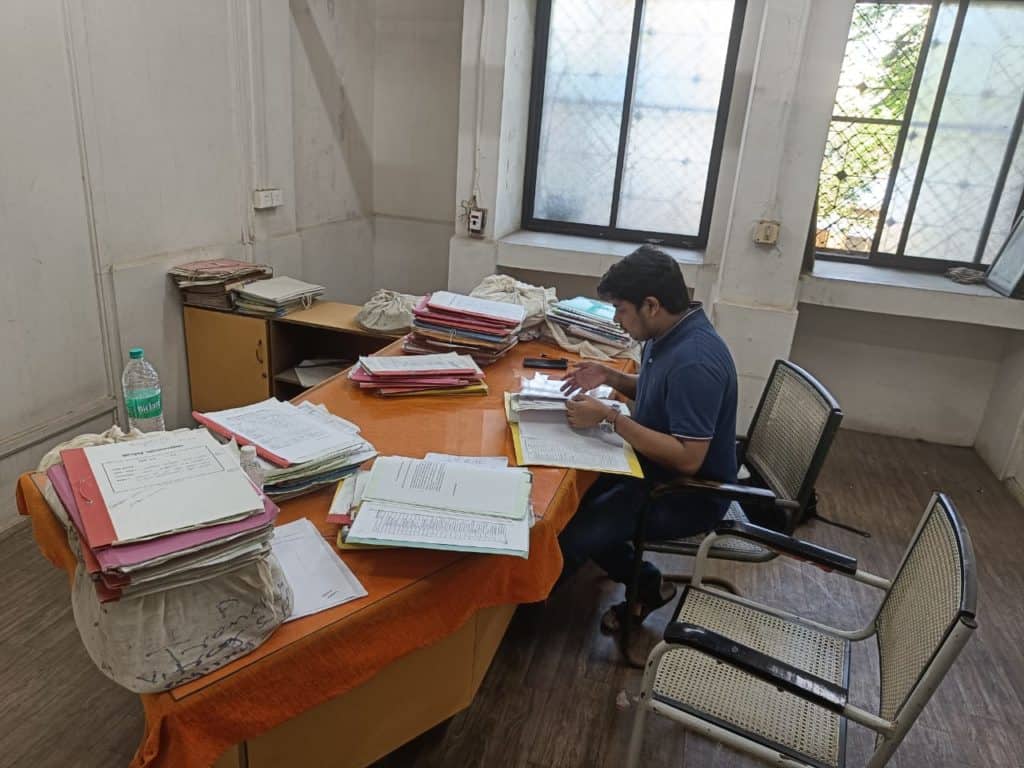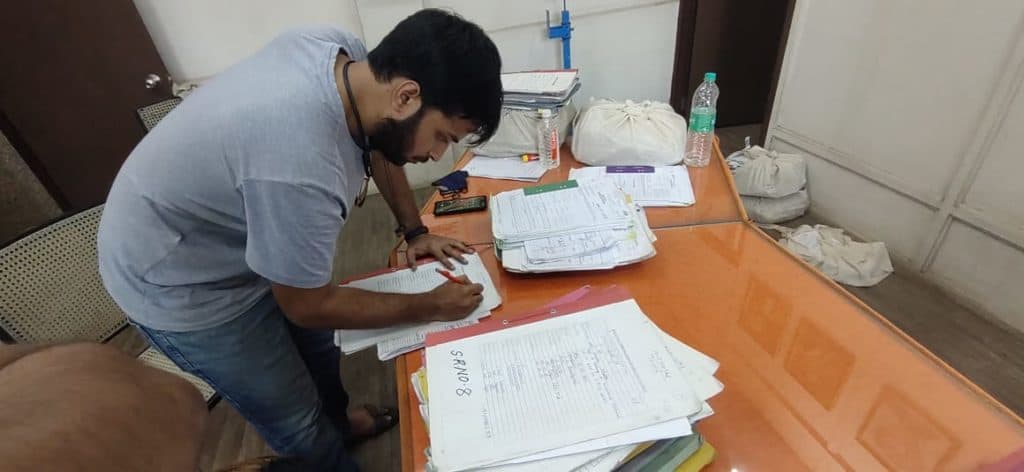Mumbai’s civic body, the Brihanmumbai Municipal Corporation (BMC), is responsible for the civic infrastructure and administration of the city and its suburbs. One of the richest municipal corporations in Asia, its budget is bigger than some of the smaller states in India. For 2022, the civic budget is Rs 45949.21, a 17.70% jump from the previous year. With such a large budget and population to cater to, we must be aware of how our tax money is spent and communicate our expectations to the municipal corporation. Active citizen participation is the foundation of democracy.
Read more: Understanding Mumbai’s municipal corporation
Why a citizen audit?
Citizens have the right to know where their civic body spends the city’s budget, what happens to the money, and have the right to be involved in decision-making processes. Under the Right To Information (RTI) Act, citizens can inspect the Maharashtra government records in district-level offices and local bodies for two hours every Monday.
For this purpose, in August 2021, a couple of Blue Ribbon Movement (BRM) volunteers took up the project to conduct an audit of fund expenditure in the R North Ward, and create a guide to help simplify the process of how a citizen audit of a Corporator’s Funds can be done.
Initial research and preparation
- Decide on the Corporator and the financial year you want to conduct an audit for. Collect basic details like the location of the ward office and the corporator details (Name, age, term, political party affiliation, etc.)
- Go through the Government Resolution (GR) that talks about the Monday inspection between 03:00 pm to 05:00 pm with BMC’s circular. Prepare a letter requesting to inspect the files under RTI Inspection, RTI act and attach the GR mentioned.
- Go through sample drafts of documents to know beforehand what documents to look for during inspections. Some key documents are Work Order, Block diagram, the document mentioning which funds were used (To check if Corporator Fund is used or some other fund), pictures of the work.
One can use the internet to search for basic details of the ward office and corporator. For us, conversations with the local citizens helped us gain more clarity. One can check BMC’s website for more information.
Our experience:
- Every time we visited the ward office, we had to carry a fresh letter requesting to inspect the files, which they would keep as a record of us having visited them.
- We had inspected expenditure for ward number 7, R-North ward Dahisar; where the ward office had changed just a few months back. The new office was where the officers were working but the files were kept at the old office. So naturally, there was a lot of back and forth between the two offices for the permission seeking and inspection of documents.
Visits to the ward office
- Reach the ward office at least 30 min prior to the inspection on Monday, i.e. 2:30 pm, to get the permission of relevant officers.
- Go to the Maintenance Department and meet the Assistant Engineer (A.E.) who looks over the ward (Also called beat) under inspection. Show them the letter requesting to inspect files attached with the GR and BMC circular & take their signature as proof of approval.
- Go to the Expenditure Department, ask for the head clerk, and show them the letter with the A.E.’s signature. Explain to them the files and documents you’re looking for, i.e. expenditure of Corporator for specific year(s), and that you want to take pictures/want copies of certain pages. (mentioned above)
- Take pictures/copies of the front page of the file, the entire work order, block diagram, the document mentioning which funds were used, pictures of the work, etc. in each file.


Our experience:
- Being asked why we are doing this audit from officers was common. Clarifying your intent helps establish the context.
- The Assistant Engineer we wanted to meet was often unavailable or at the BMC head office for a meeting. It took us additional time to get the permission piece figured. Getting their number and/or asking for their free time in advance can shorten that time significantly.
- Each Financial Year may have any number of files. In our ward, the number of files, for the Corporator’s Fund, ranged from approximately 13 to 20 for different financial years.
- On one of the days of our inspection, as we were taking pictures of files, the police officers who were security of the ward office showed up and asked us to stop the work and questioned us. Even though we had permission from senior officers, i.e. Assistant Engineer and the Head Clerk, they needed that in writing. It took the rest of our day to sort that out and submit the signed letter of the officers to the security.
- Getting a signature on the Inspection letter itself from A.E. and the head clerk while asking for permission will help others avoid this problem and save precious time, as only Monday is available to inspect files and get this data.
Pre-audit work
- Create a database to input all the important information collected from documents in the last step
| Number of the work order | Date/Duration of the work | Address of the work | Category of work (garbage, road, etc) | Name of the vendor | Cost of the work |
Example of the database
- Create the hotspots of the work (most work-dense areas) to make the on-ground work efficient and faster. Assign the team(s) to the hotspots and plan visits accordingly.
On-ground visits to audit the work
- Visit the locations of the work mentioned in the work order. Talking to residents helps with finding the address.
- Review the work done, its current condition, and talk to residents for their feedback on the work. Document the process (clicking pictures, writing down feedback, etc.) for all work orders in the financial year.
Our experience:
- In one of the works that we audited, a ramp had been repaired at a specific location in the ward. We visited this location and verified the state of the said ramp. Pictures of before/after the repair can be found here.
- Talking with residents around the work area helps in understanding the extent of the work done.
Evaluate the data and make a report
- Consolidate all the data into a single database and decide the key parameters (e.g. percentage budget spending, type of work/areas in focus, frequency & relevance of the work done, etc.) to evaluate the overall performance.
- You can rate the quality of work done, cross-verify estimates for the money spent, how much funds were left unused as well as confirm if the mentioned work orders were actually completed.
- Create a comprehensive report per year and per Corporator keeping in mind various parameters from the previous steps.
- The report may talk about the number of work orders as well as comment on the quality of the work done.
Our experience:
- A feedback we got from residents was that maintenance of previously completed work didn’t happen and when they tried to reach the Corporator for adjacent work that needed to be done, the response they got was that there were no more funds left. But when we tallied the total funds used in that period, we found out that more than 30% of funds were left unused.
- To contextualise this number, the total funds at a Corporator’s disposal are Rs 1.6 Crore for each financial year. That gets divided into two parts, i.e. Development Fund (Rs 1.0 Cr) and Corporator Fund (Rs 60 lakhs). Of the Rs 60 lakhs, more than 30%, i.e. Rs 20 lakhs were unused during that period.
- This pattern of not using funds available for civic maintenance continues across multiple financial years and wards.

The above guide only provides one of the ways that citizens can play an active role in improving democratic governance and ensuring that accountability and transparency increase in local governments. Rather than providing an exact route to conduct an audit, this guide is intended to act as a tool for anyone who wishes to perform an audit.
There are many ways an audit can be conducted, but its success depends on the contexts and the abilities of the involved stakeholders. Through RTI act 2005, Pune Municipal Corporation’s (PMC) early efforts to pioneer inspection of public offices files by citizens and the Maharashtra Government’s Resolution passed in 2018 with BMC’s circular to implement the same has helped create a framework that eases the access to information for a citizen. It also goes on to show the political will and responsiveness of the public administration to decentralise power.
Through our attempt of prototyping a citizen audit and creating a simplified guide, we realized that the dialogue that happens between different stakeholders is crucial in doing an audit and increasing transparency. Thus, the capacity building plays a pivotal role in the audit processes.
This explainer is part of a series on ‘Explainers and Information Resources for Mumbaikars’ supported by a grant from the A.T.E. Chandra Foundation.